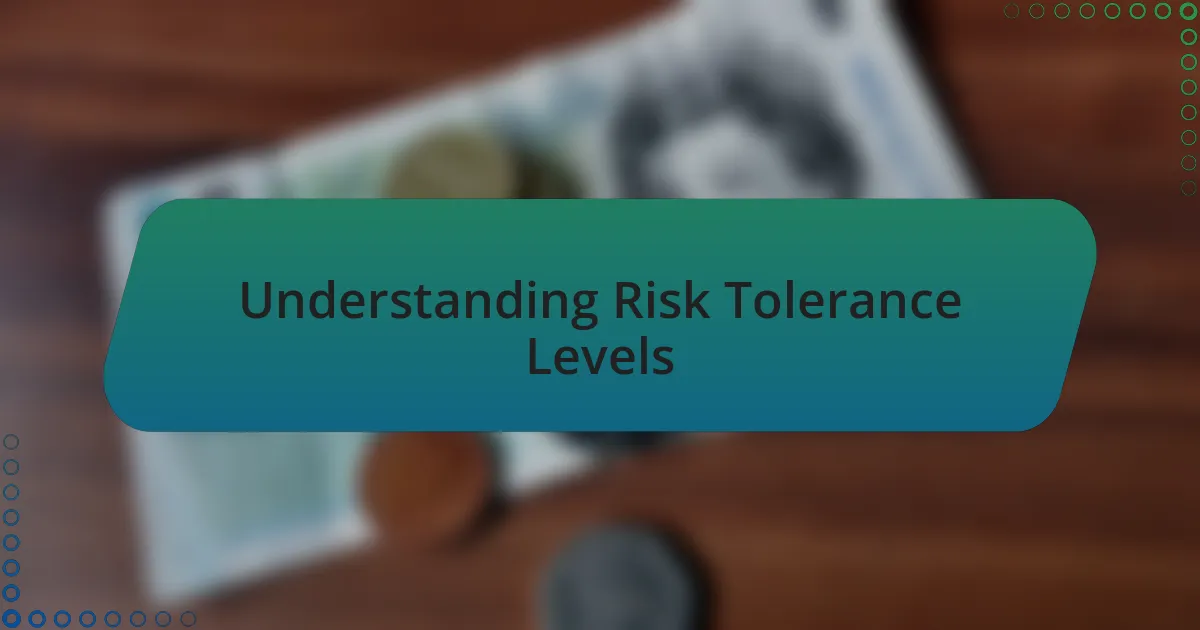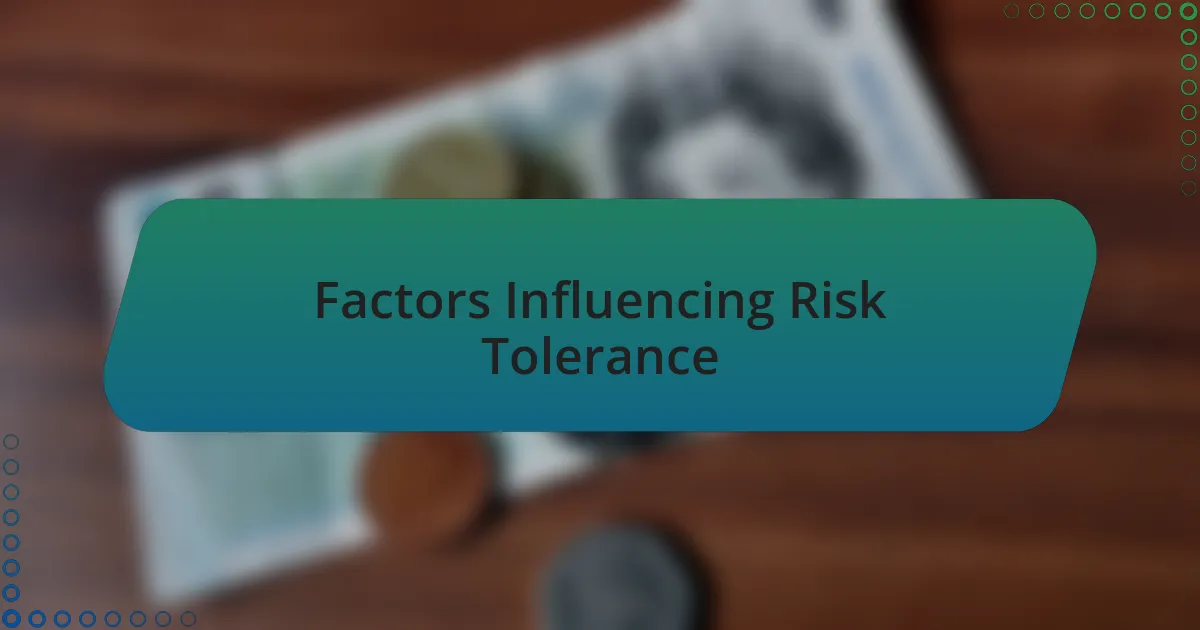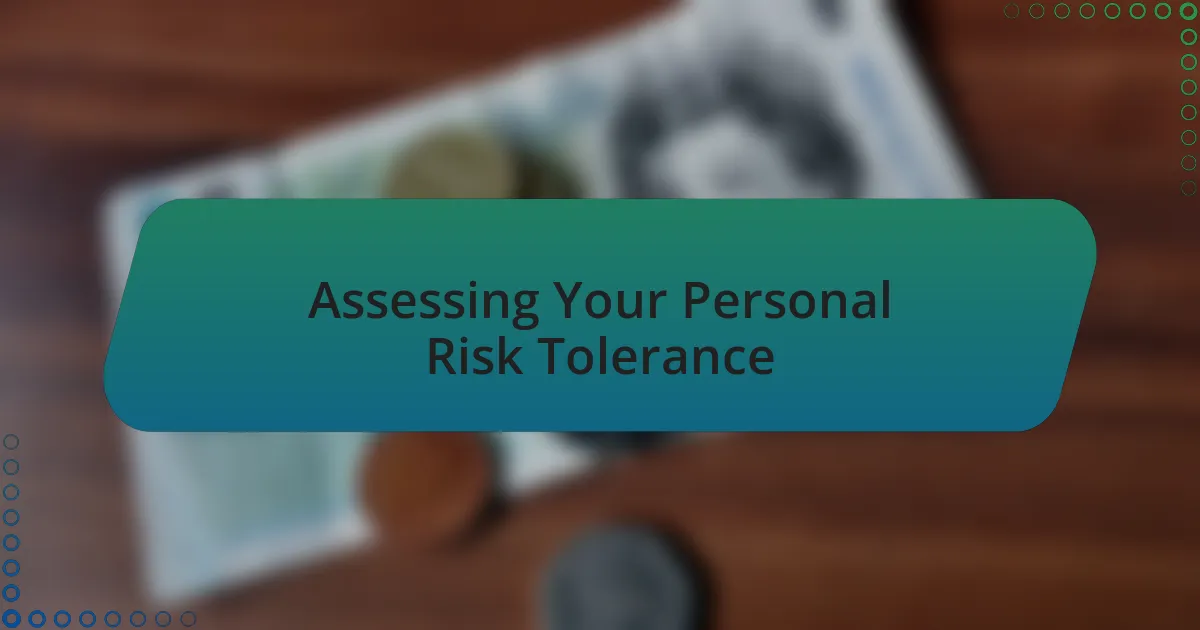Key takeaways:
- Risk tolerance is influenced by personal experiences, age, financial situation, and personal values.
- Assessing personal risk tolerance involves understanding emotional responses to losses and past investment experiences.
- Diversification, regular review of investment strategies, and setting clear financial goals are essential for managing risk tolerance.

Understanding Risk Tolerance Levels
Risk tolerance levels are fascinating and can vary greatly from one individual to another. I remember when I first started in investment consulting and had a client who was terrified of losing even a small amount of money. It made me realize that personal experiences shape our perceptions of risk. What influences your decision-making?
Understanding your risk tolerance isn’t just about numbers; it’s deeply tied to your financial goals, life experiences, and even personality. For instance, I had another client who lived through a market crash, and that experience left them more risk-averse than most. It’s a vivid reminder that our histories can profoundly color our present choices. Have you ever thought about how past experiences guide your risk-taking?
When assessing risk tolerance, it’s essential to balance emotional responses with rational assessment. I often guide clients through discussions that reveal their comfort levels, such as asking, “How would you feel if your investment dropped 20%?” The answers usually lead to deeper insights. It’s a process of digging into your feelings about money and understanding that it’s perfectly okay to feel anxious about risks.

Factors Influencing Risk Tolerance
When considering risk tolerance, one of the most influential factors is age. I recall a young investor who was eager to tackle the stock market, believing they had plenty of time to recover from any losses. In contrast, I’ve advised clients nearing retirement who were much more conservative, fearing that a significant downturn could derail their plans. How does your age shape your perspective on risk?
Another pivotal factor is financial situation. I once worked with a client who had a stable job and a substantial savings cushion, which emboldened them to take more significant risks. However, when I met individuals living paycheck to paycheck, their fear of losing potential capital often made them more cautious. Have you taken a moment to evaluate how your financial safety net affects your investment decisions?
Lastly, personal values play a critical role in shaping risk tolerance. I remember a client whose commitment to social causes led them to shun certain investments regardless of potential returns, as they preferred options that aligned with their ethics. This illustrates how passion and principles can influence risk appetite. What personal values guide your investment strategy?

Assessing Your Personal Risk Tolerance
Understanding your personal risk tolerance involves a deep dive into your financial mindset. I remember a conversation with a friend who was initially apprehensive about investing, fearing the unknown. After discussing her goals, we realized that her passion for growth and change outweighed her fear. Have you explored how your ambitions shape your willingness to take risks?
It’s also vital to consider your emotional response to potential losses. I once guided a couple through their first investment journey, and moments of market volatility brought them to the brink of panic. We worked through strategies to help them stay grounded, emphasizing the importance of sticking to their long-term goals. Isn’t it worth reflecting on how you might react under pressure?
Moreover, your investment experience plays a crucial role in assessing risk tolerance. I have seen novice investors hesitant to engage due to lack of familiarity, while seasoned traders might embrace volatility. Each experience shapes our perception, doesn’t it? Taking an honest inventory of your past encounters with investing can be enlightening, revealing how comfortable or uncomfortable you truly feel about risk.

Strategies for Managing Risk Tolerance
One effective strategy for managing risk tolerance is to diversify your investment portfolio. I’ve often encouraged clients to spread their investments across different asset classes—like stocks, bonds, and real estate—to mitigate potential losses. This approach allows you to balance high-risk opportunities with more stable investments, creating a buffer. Have you considered how diversification could cushion your financial dreams?
Another aspect to consider is regularly reviewing and adjusting your investment strategy. I recall a time when one of my clients was too focused on short-term stock trends. By revisiting their goals and aligning them with a longer-term perspective, they discovered a more suitable risk level. Isn’t it powerful to realize that a simple reevaluation can lead to greater confidence in your investment choices?
Lastly, setting clear investment goals can significantly enhance your ability to manage risk. I remember working with a younger investor who was initially overwhelmed by market fluctuations; setting a clear five-year financial target helped him see the bigger picture. By identifying personal milestones, you can gauge how much risk feels appropriate as you strive towards those aspirations. Have you taken the time to define your long-term financial objectives?